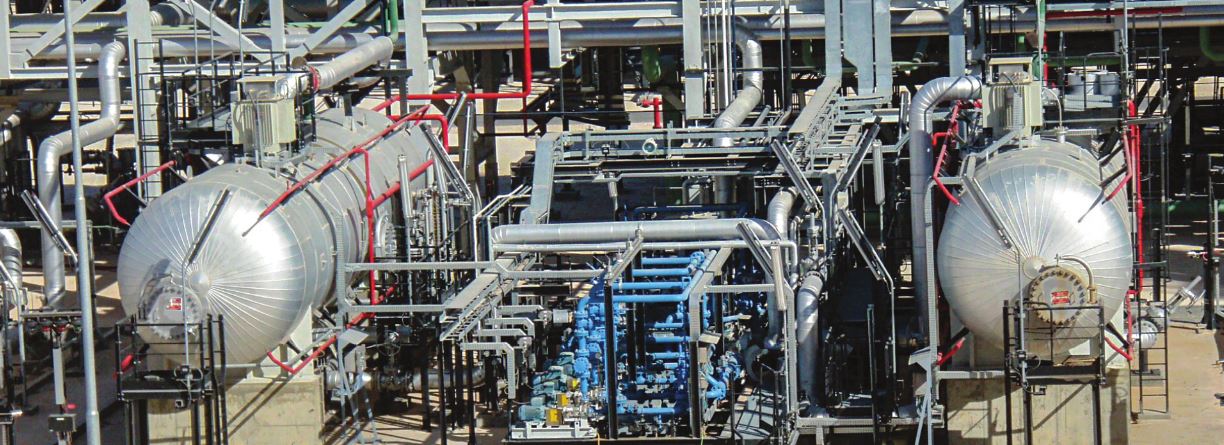Desalting Unit

Step 1 in the refining process is to remove these contaminants so as to reduce corrosion, plugging, and fouling of equipment and to prevent poisoning catalysts in processing units. The two most typical methods of crude-oil desalting are chemical and electrostatic separation, and both use hot water as the extraction agent. In chemical desalting, water and chemical surfactant (demulsifiers) are added to the crude, which is heated so that salts and other impurities are dissolved or attached to water, then held in a tank to be settled out. Electrical desalting is the application of high-voltage lectrostatic charges to concentrate suspended water globules at the bottom of the settling tank. Surfactants are added only when the crude has a large amount of suspended solids. A third (and rare) process filters hot crude sing diatomaceous earth.
The salts that are most frequently present in crude oil are calcium, sodium nd magnesium chlorides. If these compounds are not removed from the oil, several problems arise in the refining process. The high temperatures that ccur downstream in the process could cause water hydrolysis, which in turn allows the formation of corrosive hydrochloric acid. Sand, silts and salt cause deposits and foul heat exchangers. The need to supply heat to vaporize water reduces crude pre-heat capacity. Sodium, arsenic and other metals can poison catalysts. By removing the suspended solids, they are not carried into the burner and eventually flue gas, where they would cause problems for the environment such as flue gas opacity norms. Crude oil often contains water, inorganic salts, suspended solids, and watersoluble trace metals.
